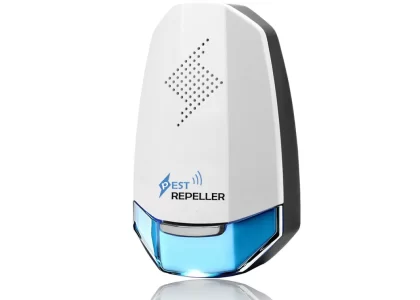 Introduction:
Introduction:
A washing machine that shakes excessively during operation can be a cause of concern for many homeowners. Not only is the shaking unsettling, but it can also lead to potential damage to the machine and the surrounding area. Understanding the reasons behind this shaking can help resolve the issue and ensure smooth and stable operation of the washing machine. In this comprehensive guide, we will explore the common causes of a shaking washing machine and provide solutions to help rectify the problem. By identifying and addressing the underlying issues, users can enjoy a quieter and more efficient laundry experience.
 There are several types of washing machines available in the market. Here are some common types:
There are several types of washing machines available in the market. Here are some common types:
Top-load washing machine:
This type of washing machine features a vertical drum and a hinged door on the top. Clothes are loaded and unloaded from the top of the machine.
Front-load washing machine:
Front-load washing machines have a horizontal drum and a door at the front for loading and unloading clothes. They are known for their efficiency and water-saving capabilities.
High-efficiency (HE) washing machine:
HE washing machines can be either top-load or front-load machines. They are designed to use less water and energy compared to traditional models. HE machines typically have higher spin speeds to remove more water from clothes.
Compact washing machine:
Compact washing machines are smaller in size and are suitable for apartments or limited spaces. They can be either top-load or front-load machines and have a reduced capacity compared to standard-sized washers.
All-in-one washer/dryer combo:
These machines combine both washing and drying functions into a single unit. They are convenient for those with limited space or who prefer a compact laundry setup.
Portable washing machine:
Portable washing machines are smaller and lightweight. They are designed for travel, camping, or small living spaces. They are usually top-load machines and have a limited capacity.
Semi-automatic washing machine:
Semi-automatic washing machines require manual intervention to switch between the washing and drying cycles. They typically have separate tubs for washing and spinning.
Fully automatic washing machine:
Fully automatic washing machines automatically complete the entire wash cycle, including washing, rinsing, and drying, without the need for manual intervention. They can be either top-load or front-load machines.
These are some of the common types of washing machines available. The choice depends on factors such as space, capacity, energy efficiency, and personal preferences.
 Here are some of the dangers associated with a shaking washing machine:
Here are some of the dangers associated with a shaking washing machine:
When a washing machine shakes or vibrates excessively during operation, it can pose several potential hazards and issues. Here are some of the dangers associated with a shaking washing machine:
Damage to the machine:
Excessive shaking can cause internal components, such as motors, belts, or wiring, to become loose or dislodged. This can lead to the malfunctioning of the machine, reducing its performance and potentially requiring costly repairs or replacements.
Noise and disturbance:
A shaking washing machine can generate loud noises, causing disruption and annoyance in the surrounding area. This can be a particular concern in apartments or shared living spaces where noise levels are a consideration.
Damage to the floor and surrounding structures:
The vibrations from a shaking washing machine can transfer to the floor and other adjacent structures, such as cabinets or countertops. Over time, this continuous shaking can lead to cracks, dents, or other damages to the flooring or surrounding fixtures.
Risk of injury:
A severely shaking washing machine can pose a physical risk. It may topple over or move unexpectedly, potentially causing injury to anyone in the vicinity. This is especially concerning if the machine is located on an elevated surface or near objects that can pose additional hazards.
Poor washing performance:
Excessive shaking can interfere with the proper functioning of the machine, affecting the washing performance. The unbalanced load caused by the shaking may result in inadequate cleaning, poor rinsing, or improper spinning of the clothes.
Increased energy consumption:
A shaking washing machine may lead to energy inefficiency. The excessive vibrations can cause the machine to work harder and consume more energy than necessary to compensate for the imbalance.
It is important to address the issue of a shaking washing machine promptly to mitigate these risks. Checking and adjusting the machine’s leveling, redistributing the laundry load evenly, and inspecting for any mechanical faults are some steps that can help resolve the shaking issue and ensure the safe and efficient operation of the washing machine.
 Unbalanced Load
Unbalanced Load
Overloading:
Overloading the washing machine with too many clothes can cause an imbalance in the drum during the spin cycle.
This imbalance results in excessive shaking and can potentially damage the machine.
Uneven Distribution of Clothes:
If the clothes inside the washing machine are not evenly distributed, the load becomes unbalanced during spinning.
Heavy items, such as towels or jeans, should be distributed evenly around the drum to ensure balanced spinning.
Leveling and Stability Issues
Uneven Flooring:
Placing a washing machine on an uneven surface, such as a sloping or unleveled floor, can cause the machine to shake.
Ensure the floor is level and sturdy to provide a stable foundation for the machine.
Incorrect Machine Leveling:
If the washing machine is not properly leveled, it can result in excessive shaking during operation.
Adjust the leveling legs of the machine to make it balanced on all four corners.
Damaged or Worn Components
Shock Absorbers:
Shock absorbers play a crucial role in stabilizing the drum and reducing vibrations during spinning.
If the shock absorbers are worn or damaged, they may need to be replaced to restore stability to the washing machine.
Suspension Springs:
Suspension springs support the weight of the drum and help absorb vibrations during operation.
If the springs are broken or weak, they can result in excessive shaking and need to be replaced.
Machine Installation and Maintenance
Transit Bolts:
New washing machines are typically equipped with transit bolts to secure the drum during transportation.
Failure to remove these bolts upon installation can cause the machine to shake excessively during operation.
Loose or Worn Drive Belt:
A loose or worn drive belt can cause instability and shaking during spinning.
Inspect the drive belt regularly and tighten or replace it if necessary.
Proper Machine Maintenance:
Regular maintenance, such as cleaning the drum and ensuring the machine is free of debris, can help reduce shaking by ensuring smooth operation.
Follow the manufacturer’s guidelines regarding maintenance, such as removing lint and debris from the pump filter.
 Conclusion:
Conclusion:
A shaking washing machine can be alarming and disruptive. By understanding the various causes and solutions highlighted in this guide, users can rectify the issue and restore stability to their machines. Avoiding overloading, distributing clothes evenly, ensuring proper machine leveling, and addressing damaged or worn components are key steps in reducing shaking. Regular maintenance and proper installation techniques are also crucial for the long-term stability and smooth operation of the washing machine. With the comprehensive information provided in this guide, users can confidently address shaking issues, restore stability to their machines, and enjoy a quieter and more efficient laundry experience.





